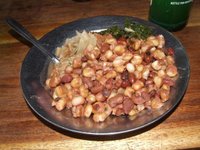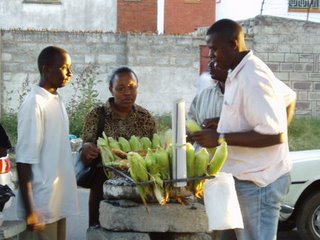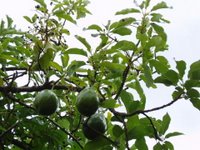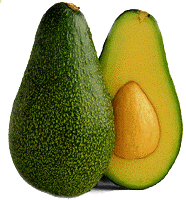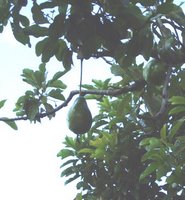:::::::::::::::::::::::::::::::::::::::::::::::::::::::::::::::::::::::::::::::::::::::::::::::::::::
Maize (Swahili : Mahindi, American : Corn, South African : Mealies)
***** Location: Kenya, East Africa, other areas
***** Season: Dry Season and others, see below
***** Category: Plant
*****************************
Explanation
Maize is the main staple crop of Kenya and its neighbours. It is the size of the maize and bean crops that determines the nutritional state of the nation. Moreover, maize constitutes the most important element of the country’s strategic grain reserve.
Maize and beans together form a nutritional whole which is greater than the sum of its parts, each bringing out the best in the other. Thus, it is no surprise that the greatest staple dishes of the country are composed of maize and beans cooked together or separately -- githeri (maize and beans cooked together, with the addition of some onions, tomatoes and potatoes), mûkimû or irio (maize and beans, mashed together with potatoes and bananas).
Maize is also roasted over charcoal fires in every town and city along the roadside and eaten by passers by as a filling snack.
The most “Kenyan” of all dishes, eaten by practically all nations of the country, is ugali, a soft cake of boiled maize flour, skillfully eaten with one’s fingers, together with sukuma wiki (cooked shredded green cabbage) or a meat stew. For the Luo people, a meal is not a meal if it does not include ugali!
As a kigo,
maize plays the same role in Kenya as rice does in Japan. Each season has its kigo related to maize -- its planting, weeding, watering, ripening, harvesting, decobbing, the cleaning (“selecting”) of the grains, various dishes eaten at different stages of the grain’s ripening, various uses for the stalks and leaves, various worries when the weather is too dry or too wet at different stages of the maize crop’s progress.
These kigo are repeated twice a year, as maize is planted at the start of each rainy season and harvested towards the middle of each dry season. Some maize dishes are eaten all year round, some are quite seasonal, as they are cooked with unripe (“green”) maize.
Maize has replaced some of the earlier staples, such as millet and sorghum, which still accompany many of the traditional festivals in the lives of the communities.
Kenya eats white maize, which differs from the smaller, harder, sweeter yellow maize grown and eaten in Europe and North America. It is said that the colonialists liked the white maize so much that they reserved it for themselves, making the Africans eat yellow maize. After Independence, Kenyans have never wanted to touch it again, and even during famine seasons, they treat foreign donations of yellow maize with the greatest of suspicion.
The “maize countries” of Africa generally lie along the Indian Ocean, from Kenya southwards, all the way to South Africa. North of Kenya, in Ethiopia, tef (Ethiopian millett) is the main staple, in Uganda, it is matoke (bananas), and further westward from there, it becomes cassava, with its favourite dish, fufu. All these carbohydrates, as well as sweet and “Irish” potatoes, rice and tapioca, are also grown and eaten in Kenya, but maize is the nation’s favourite by far.
Isabelle Prondzynski
Text and Photos
:::::::::::::::::::::::::::::::::::::::::::::::::::::::::::::::::::::::::::::::::::::::::::::::::::::
Maize kigo of Kenya
preparing maize fields
planting maize seeds
weeding maize fields
growing maize plants
ripening maize plants
harvesting maize
decobbing maize cobs
composting maize stalks
Green Maize
ripe maize
mûkimû
xxxxxxxxxxxxxxxxxxxxxxxxxxxxx
Some recipe pages :
Githeri :
http://www.kenya-mail.com/githeri.html
http://www.congocookbook.com/c0203.html
Irio (mûkimû) :
http://www.congocookbook.com/c0045.html
Ugali :
http://www.congocookbook.com/c0051.html
http://kenya.rcbowen.com/recipes/ugali.html
xxxxxxxxxxxxxxxxxxxxxxxxxxxxx
And a wonderful article in German about githeri & co. :
Githeri - nicht nur für geschäftstüchtige Kioskbesitzer ein Gewinn
VON CHRISTOPH LINK (NAIROBI)
Die Volksgruppe der Gikuyu in Kenia gilt als besonders geschäftstüchtig, und man sagt, sie seien sparsame Leute, die ihr Geld nicht verprassen, sondern auf die hohe Kante legen. Vielleicht liegt es daran, dass in den Küchen der Gikuyu im kühlen und zentralen Hochland Kenias besonders preiswerte Gemüsegerichte entstehen. Mukimo zum Beispiel - ein Erbsen-Kartoffelpüree - oder das berühmte Githeri, ein Eintopf aus Mais und Bohnen, der so ein Schlager ist, dass er sogar in Dosen verpackt im Handel erhältlich ist.
To read more, click HERE !
:::::::::::::::::::::::::::::::::::::::::::::::::::::::::::::::::::::::::::::::::::::::::::::::::::::
Zea mays (Maize, Corn)
Mielie [Afrikaans]
by Hamish Robertson
Maize originates from Mexico and by the time Columbus arrived in the New World, there were already many domesticated varieties. Maize has become a particularly important crop in North America and Africa.
There are four wild species in the genus Zea, all of which are native to Mexico and northern Central America. One of these, Zea mexicana, commonly called teosinte, gave rise to maize Zea mays. Genetic evidence suggests that maize originated mainly from the Balsas race of teosinte which is found in the Balsas River basin in the Michoacan-Guerrero border region of western Mexico. Zea mays is thought to have speciated from Z. mexicana into a separate gene pool many thousands of years ago afterwhich it diversified into a number of different races.
Archaeological evidence from the Tehuacan caves in Puebla, Mexico, suggests that people were using Z. mays rather that Z. mexicana from about 5000 BC. The remains of Z. mays from these caves still bare quite a close resemblance to Z. mexicana in that the ears are small and slender and the grains are tiny and hard. However, the cobs were non-shattering and there were mostly eight row of kernels although there were a few four rowed types. They were probably used to produce popcorn.
By the time Columbus arrived in the Americas, people had developed numerous forms of maize and were often growing them in close proximity to one another. Although maize is wind-pollinated, people were able to keep races genetically distinct because (1) different races were grown in different fields with forest inbetween; (2) pollen of the same race as the plant tends to grow down the long styles faster than pollen of different races; and (3) farmer can spot a cob with pollination by different races of pollen because grains are often differently coloured - cobs like this would be rejected for planting.
Columbus brought maize grains back to the Spanish court, originating from the Greater Antilles in the Caribean, and these were grown in Spain in 1493. Basque companions of Pizarro brought maize grains back from Peru and introduced maize growing to the Pyrenees. Maize growing spread rapidly in Europe although only in southern Europe did it become a major crop. The popularity of maize in this region stemmed from the increased yield it provided over other spring crops such as wheat. It soon became the staple diet of poor people which led to malnutrition because maize is defficient in the amino acids lysine and niacin and white maize is defficient in carotene which is converted to Vitamin A. The disease pellagra became common, caused by a deficiency of niacin.
Maize was introduced to Africa in the 16th and 17th centuries and was readily accepted by African farmers, partly because it was grown and used in a similar way to their traditional crop of grain sorghum. Maize displaced sorghum as the staple grain in all but the drier regions. The Portuguese are thought to have introduced maize to Asian regions where it became widely grown but in most cases did not replace rice and wheat as the major crops.
In North America, the Red Indian tribes were growing maize as far back as 200 AD, but it was only in the 19th Century, with the aid of draft animals and ploughs, that European settlers rapidly developed the prairie grasslands of the Eastern US into what is now referred to as the Cornbelt. It was in this region that new, higher yielding maize varieties were developed, some of which were adopted in other parts of the world.
Copyright 2004, Iziko Museums of Cape Town
http://www.museums.org.za/bio/plants/poaceae/zea_mays.htm
toumorokoshi, tohmorokoshi
xxxxxxxxxxxxxxxxxxxxxxxxxxxxx

http://www.comekuona.org/Working%20on%20field%2002.jpg
http://flickr.com/photos/jenly/110072694/in/photostream/
http://www.kenyaseed.com/maize.htm
*****************************
Worldwide use
Japan
Maize, toomorokoshi 玉蜀黍、とうもろこし, トウモロコシ
kigo for late summer
toomorokoshi no hana 玉蜀黍の花 (とうもろこしのはな)
maize flowers
nanban no hana なんばんの花(なんばんのはな)
tookibi no hana 唐黍の花(とうきびのはな) "Kibi from Tang China" flowers
.................................................................................
kigo for mid-autumn
....... other words used are
morokoshi, もろこし
"Southern Barbarian Millet", nanban kibi 南蛮黍 (難波黍)
..... nanban なんばん
Korean Millet, koorai kibi 高麗黍
Chinese (Tang) Millet, tookibi, 唐黍、玉黍
corn, koon コーン
Another species (some Japanese saijiki lists them as the same) :
"high millet" takakibi 高黍
Chinese Millet, kooryan こうりゃん, 高粱
corn-millet, morokoshi kibi もろこしきび
Chinese (Tang) Millet tookibi 唐きび
These crops have been introduced by the Portugese (nanban) to Japan around 1570. Some came via China and Korea, hence the naming.
Kooryan is the main source of an alcoholic drink of China.
「唐土」と書いて「モロコシ」と読みますが(勿論、トウドと読んでも構いませんが・・・)、「唐黍」がさすモロコシは、唐土の事ではありません。漢字を当てると「蜀黍」です。「蜀」も日本では中国あるいは大陸を表す文字のひとつでありましたから、どの道中国ゆかりのコトバであることは同じですね。
著名な中国酒のひとつであるコーリャン酒の原料である「高粱」は、モロコシの中国語の呼び方です。
http://www002.upp.so-net.ne.jp/ayuta/kotoba/kotolog/tokibi.html
WKD : Maize and other autumn vegetables
. PLANTS - - - the Complete SAIJIKI .
:::::::::::::::::::::::::::::::::::::::::::::::::::::::::::::::::::::::::::::::::::::::::::::::::::::
USA
. corn shucking, corn husking
*****************************
Things found on the way
*****************************
HAIKU
strong and healthy maize
due to sewage nutrients --
very green colour
-- Grace Wanjau (Falcons)
唐黍や汚水で育つ青々と
tookibi ya
osui de sodatsu
aoao to
(Tr. Sakuo Nakamura)
xxxxxxxxxxxxxxxxxxxxxxxxxxxxxxxxxxxxxxxxxxxxx
Read more MAIZE haiku from the Kenya Haiku Clubs here !
:::::::::::::::::::::::::::::::::::::::::::::::::::::::::::::::::::::::::::::::::::::::::::::::::::::
Golden maze of maize
Silent sentries standing tall
Summer fortress formed
Harley Gal, USA
http://www.blossomswap.com/poems/haiku.html
:::::::::::::::::::::::::::::::::::::::::::::::::::::::::::::::::::::::::::::::::::::::::::::::::::::
Shiki Haiku Competition, August 2009
cold afternoon --
an old toothless woman
roasting maize
~ stephen macharia
a boy chews an
abandoned green maize...
late noon
~ Catherine Njeri Maina
vociferous murmur
from the maize plantation...
August showers
~ Patrick Wafula
dry morning --
people sowing maize seeds
along the river bank
~ Eric Mwange
old Kikuyu farmer
busy on his withering maize --
sad face
~ mugaka
Kenya Saijiki Forum
:::::::::::::::::::::::::::::::::::::::::::::::::::::::::::::::::::::::::::::::::::::::::::::::::::::
brown moulds form
on a rotting maize cob-
stagnant water
Andrew Otinga
:::::::::::::::::::::::::::::::::::::::::::::::::::::::::::::::::::::::::::::::::::::::::::::::::::::
lunch time--
she drops a plateful
of githeri
Ceciliah Wambui
Discussion at the Kenya Forum
:::::::::::::::::::::::::::::::::::::::::::::::::::::::::::::::::::::::::::::::::::::::::::::::::::::
wilted maize—
the sandy riverbed turuns
into a path
Patrick Wafula
during a drought in February, 2011
:::::::::::::::::::::::::::::::::::::::::::::::::::::::::::::::::::::::::::::::::::::::::::::::::::::
shelling maize -
the blister on her hand
burst
Doris Muthoni
March 2012
*****************************
Related words
***** Green Maize
:::::::::::::::::::::::::::::::::::::::::::::::::::::::::::::::::::::::::::::::::::::::::::::::::::::
***** Millet (kibi きび、黍)
kigo for mid-autumn in Japan
ear of the millet, kibi no ho 黍の穂
cutting millet, kibi karu, 黍刈る
thrashing millet, kibi hiku 黍引く
millet-field, kibibata 黍畑
millet dumplings, kibi dango 黍団子
. Millet (awa, hie, kibi)
:::::::::::::::::::::::::::::::::::::::::::::::::::::::::::::::::::::::::::::::::::::::::::::::::::::
WASHOKU :
YASAI . Vegetable SAIJIKI
[ . BACK to WORLDKIGO . TOP . ]
:::::::::::::::::::::::::::::::::::::::::::::::::::::::::::::::::::::::::::::::::::::::::::::::::::::





